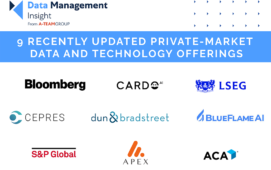
Europe’s banks must get their data management structures in place if they are to meet anticipated rules for identifying and mitigating ESG risks.
ESG cannot be a mere afterthought in lenders’ risk management protocols if they are to meet anticipated new regulations, and that can be best achieved through careful data management, said Volker Lainer, head of connections, ESG and regulatory affairs ****at enterprise data management outfit GoldenSource.
“As the demands of European regulators continue to evolve, firms need to ensure they pay sufficient attention to ESG as a pillar within their overall data governance and risk management processes,” Lainer told ESG Insight. “When it comes to identifying and measuring ESG risks, both the quality and accessibility of data needs to be central to considerations.”
Consultation Process
Lainer’s comments came in response to the announcement last week that the European Banking Authority (EBA) had launched a consultation on its plans to usher rules on banks’ management of ESG risks. Stakeholders will have until April 18 to offer their views on its guidelines, which aim to integrate the identification, measurement, management and mitigation of ESG risks into their convention risk management processes.
Respondents will be asked to complete a 24-part questionnaire on the measures they have in place and the metrics they use.
The consultation was instigated as part of the EU’s broad green finance plan and is intended to tie sustainability into banks’ wider Pillar 3 assessments of conventional risks, as laid out in the Basel Framework.
Its proposed governance arrangements call for minimum standards on reference methodologies for the identification, measurement, management and monitoring of ESG risks. It expects the detailing of criteria for the assessment of ESG risks. And banks will be required to lay out their timetables and targets to monitoring risks.
The rules would apply to larger institutions while smaller lenders, called small and non-complex institutions (SNCIs) would be expected to implement less complex ESG integration methodologies. The proposed guidelines would work in conjunction with the Capital Requirement Directive (CRD6), which seeks to provide banks with enough capital buffers to withstand another deep financial downturn.
Positive Move
Lainer welcomed the consultation and stressed that the EBA itself had emphasised the need for institutions “to ensure they have an effective data management strategy in place, enabling systems to efficiently collect and aggregate ESG risk-related data”.
“Ultimately, it’s positive to see the EBA considering the opinions and insights of the industry when it comes to management of ESG risks,” he said.
Banks are regarded as laggards in the race among financial firms to bolster their ESG capabilities as regulations loom. Rules so far have been focused on institutions with more public money at stake, such as asset managers and funds. Banks are now in the crosshairs as the EU, the UK and other economies look to make banks’ loan books more sustainable and strengthen the green bond market.
“They are all taking the subject very seriously but the response has been far from uniform,” Stella Fau Clarke, chief strategy officer at Dublin-based Fenergo, told ESG Insight last year of the progress that she has seen banks make. “Honestly, they could do better.”
Minimum Requirements
The proposed guidelines set minimum requirements for environmental standards and transition pathways to climate neutrality. Banks must then identify their ESG risks and lay out their approach to mitigating them. Minimum requirements for that would include engagement with counterparties that have poor ESG records.
Lainer said this is where ESG data processionals would enter the process, providing the tools to achieve such obligations.
“Utilising a diverse range of methodologies and data sources is also essential, increasing the accuracy of risk assessments and allowing firms to better scrutinise investment decisions,” he said.
“The implementation of these public consultations by European regulators, such as this action from the EBA, demonstrate that the initial foundations for ESG regulations have been laid. The industry as a whole is now looking to mature and advance forward.”
A virtual public hearing on the consultation paper will be held on February 28, in which stakeholders can air their concerns and seek further details.
Subscribe to our newsletter




